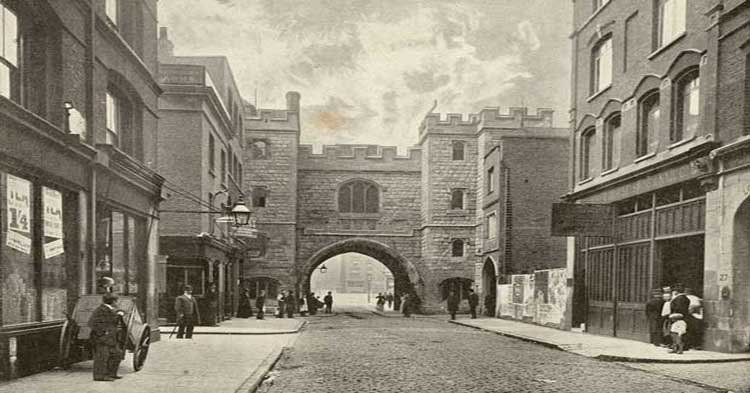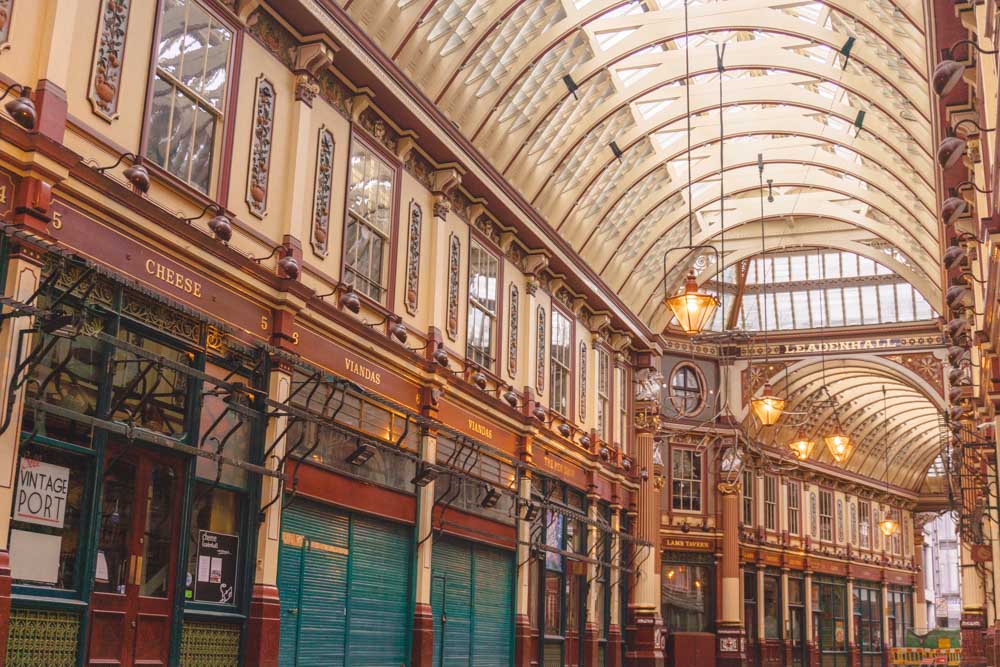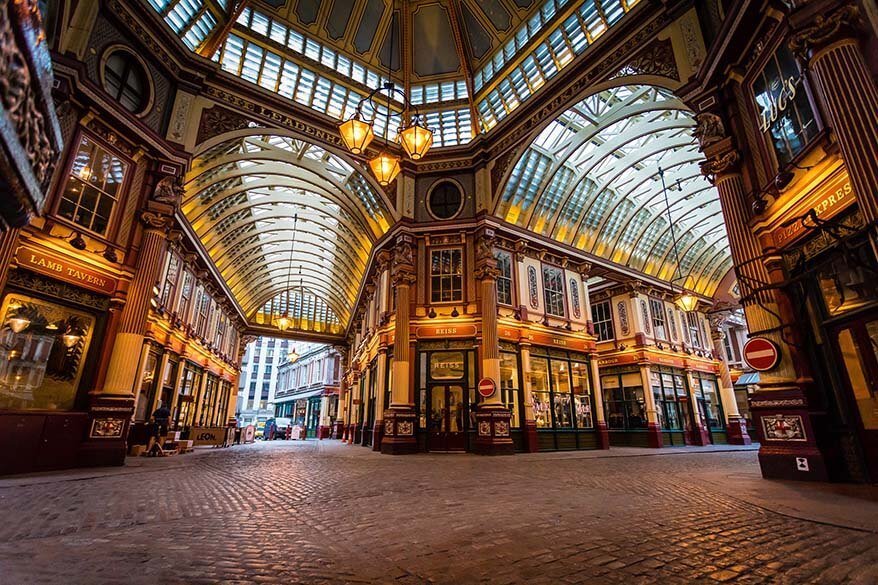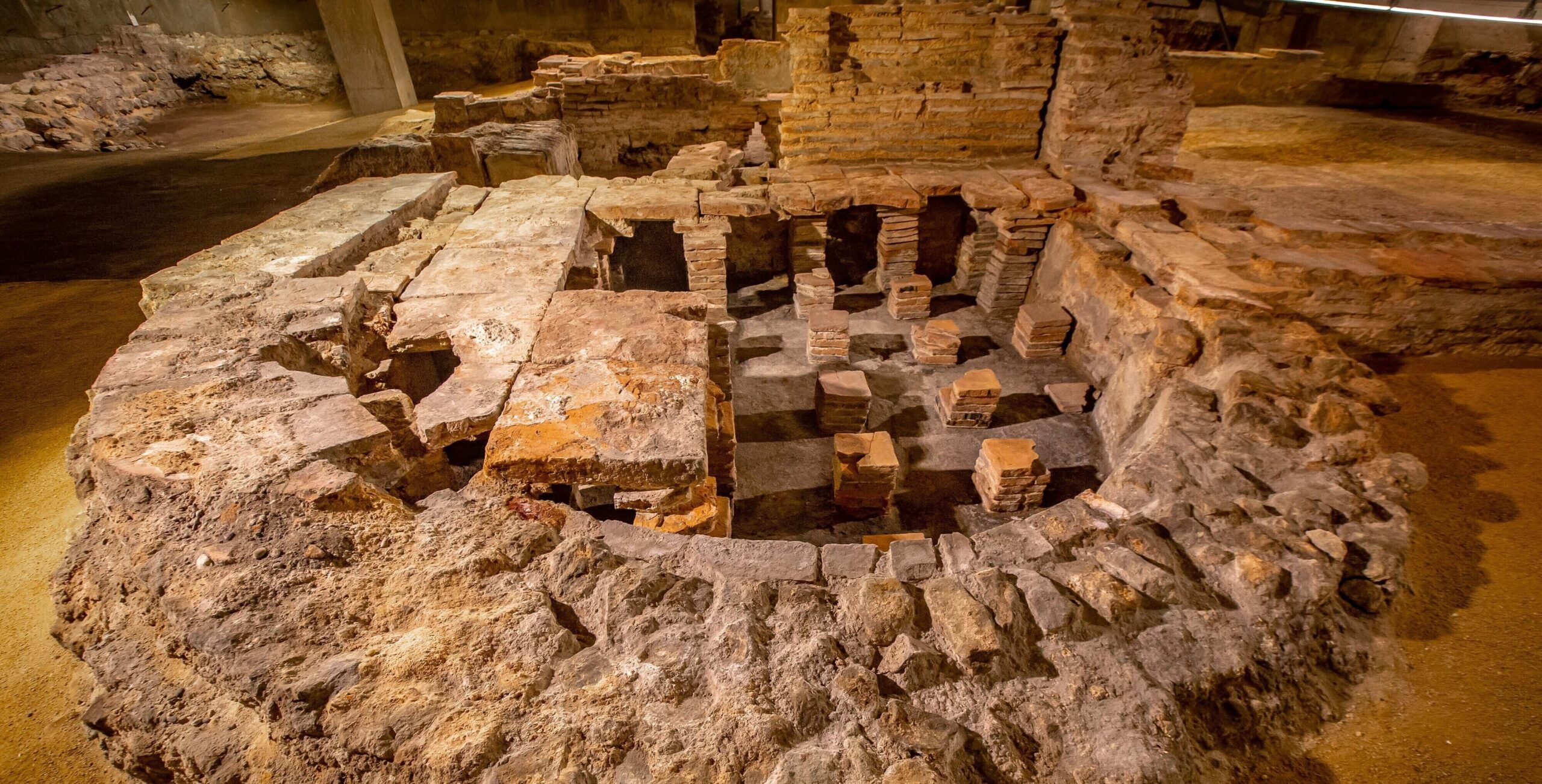Uncovering London’s Hidden History: A Guide to the City’s Historical Sites

Introduction
Overview of London‘s Hidden History
London is a city steeped in history, with narratives that span centuries. Beneath the bustling streets and modern facades lie stories waiting to be discovered. From ancient Roman settlements to medieval landmarks, the layers of history are woven into the very fabric of the city.
Significance of Exploring Historical Sites
Exploring London’s historical sites is more than just a stroll through the past; it is an opportunity to connect with the stories that shaped the world.
- Cultural Understanding: Each site illuminates a different aspect of the city’s diverse <a href="https://ariatravels.com/uncovering-britains-rich-cultural-heritage-a-guide-to-cultural-tourism/”>heritage.
- Educational Experience: Visitors learn about significant events and influential figures that changed the course of history.
By immersing oneself in these sites, individuals gain a richer appreciation of their surroundings while echoing the voices of those who came before. It’s a chance to walk in the footsteps of history and witness how every brick tells a story.

Ancient Origins of London
Roman Settlement of Londinium
The ancient origins of London date back to the Romans, who established Londinium around AD 47. This settlement quickly grew into a thriving centre of trade and governance, nestled strategically along the River Thames. Walking through the remnants today, one can almost hear the echoes of merchants and soldiers bustling about.
- Key Features of Londinium:
- Fortified walls, which some parts still exist today
- A bustling marketplace, akin to modern-day markets
- The development of roads connecting it to other Roman settlements
The remnants of Roman architecture remind us of a time when London was merely a small outpost in the vast Roman Empire.
Saxon and Viking Influence
Following the Romans’ departure in the 5th century, London faced a series of transformations. The Saxons arrived, fostering a sense of community and governance that set the stage for the city’s growth.
- Saxon Contributions:
- Establishment of Westminster as an important political centre
- Construction of churches that still stand today
However, the Saxon era was not without its challenges. Viking raids in the late 8th century introduced both conflict and cultural exchange.
- Viking Impact:
- Establishment of Danelaw, influencing the local economy and society
- Introduction of new trade routes
These ancient influences have left an indelible mark on London’s identity, highlighting the city’s resilience and adaptability in the face of change.

Medieval London
The Tower of London
Transitioning from the ancient origins, the medieval period of London marked a time of fortification and power. The Tower of London, built by William the Conqueror in 1066, stands as a symbol of this era’s complexities. This iconic fortress has served multiple roles over the centuries, from royal palace to prison.
- Interesting Features of the Tower:
- Home to the Crown jewels, showcasing royal wealth and power
- Historic executions and imprisonments, underlining its ominous legacy
- The Yeoman Warders, or “Beefeaters,” who offer captivating tales to visitors
During a recent visit, I marveled at the stark contrast between the Tower’s grim history and its picturesque setting along the Thames.
Guildhall and Medieval Markets
While the Tower exemplifies power, the heart of medieval London thrived at the bustling markets. Guildhall, the city’s ceremonial and administrative center, illustrated the growing importance of trade and commerce during this era.
- Guildhall Highlights:
- Architectural marvel dating back to the 15th century
- Hosts important events and ceremonies, reflecting the city’s governance
Medieval markets, like those held at Leadenhall Market, were the lifeblood of London. They were vibrant spaces filled with:
- Goods: From spices to textiles
- People: Merchants, artisans, and townsfolk sharing gossip and news
These markets not only enhanced the economy but also fostered a sense of community, allowing citizens to gather and mingle. Overall, medieval London was a tapestry of power, trade, and community, setting the stage for its future evolution.

Tudor and Stuart Era
Hampton Court Palace
As London progressed through the medieval period, the Tudor and Stuart eras introduced a burst of artistic and architectural grandeur. One of the most remarkable sites from this period is Hampton Court Palace, originally built for Cardinal Wolsey and later seized by King Henry VIII.
- Key Features of Hampton Court Palace:
- Stunning gardens and intricate structures, a feast for the eyes
- The famous Great Hall, showcasing the opulence of Tudor banquets
- The intriguing Tudor kitchens, where royal feasts were prepared
Walking through its ornate halls, visitors can almost picture the lavish parties and intrigue that defined the court. I found myself lost in thought, imagining Henry VIII striding proudly through the grand corridors.
Shakespeare’s Globe Theatre
While the palace was a hub of political power, the cultural scene flourished at Shakespeare’s Globe Theatre. This iconic venue, rebuilt as a faithful reconstruction of the original 1599 theatre, is where the Bard captivated audiences with his timeless plays.
- Highlights of Shakespeare’s Globe:
- Open-air structure that allows for a unique theatrical experience
- Regular performances that pay homage to Shakespeare’s genius
- Educational programs that delve into Elizabethan theatre practices
Experiencing a performance at the Globe is like stepping back into the past. The energy of the audience and the brilliance of the actors transport one to a time where drama and storytelling thrived. Together, Hampton Court Palace and Shakespeare’s Globe encapsulate the dynamic spirit of London’s Tudor and Stuart eras, showcasing both power and creativity in their fullest forms.

Industrial Revolution and Victorian London
The Crystal Palace
As the city moved into the Industrial Revolution, London underwent transformative changes that significantly shaped its identity. One of the most iconic structures of this era was the Crystal Palace, a marvel of glass and iron designed for the Great Exhibition in 1851.
- Features of The Crystal Palace:
- An architectural wonder that showcased cutting-edge technology
- Hosted numerous exhibitions, celebrating human ingenuity
- Central parkland with gardens that invited visitors to relax and enjoy
Walking through the remnants of the Crystal Palace, I was struck by the ambition it represented—a testament to a society eager to embrace progress and innovation.
Jack the Ripper’s Haunts
However, the Industrial Revolution was not without its shadows. Amidst the prosperity, the notorious figure of Jack the Ripper cast a long pall over Victorian London. The unsolved murders in Whitechapel in 1888 gripped the public’s imagination and forever changed perceptions of the city.
- Key Areas Associated with Jack the Ripper:
- Whitechapel: The heart of the gruesome events
- Mitre Square and Dutfield’s Yard: Infamous crime scenes that still haunt popular culture
During a walking tour, I could feel the weight of history as the guide recounted the chilling tales of those dark nights. These contrasting elements—the dazzling ambition of the Crystal Palace and the grim reality of Jack the Ripper’s reign—highlight the complexities of Victorian London, a city thriving with innovation while grappling with its darker side.

World War Periods
Churchill War Rooms
As London endured the trials of the World Wars, the city transformed once again, reflecting resilience and determination. A key site from this turbulent time is the Churchill War Rooms, a secret underground bunker where Winston Churchill and his cabinet planned military strategy during World War II.
- Highlights of the Churchill War Rooms:
- Preserved war rooms, providing a snapshot of wartime operations
- Fascinating exhibits showcasing Churchill’s leadership and speeches
- The Cabinet War Rooms, where critical decisions were made
Visiting this historic site felt like stepping back in time. The atmosphere was charged with history, and one could almost hear the echoes of strategists discussing the fate of nations.
Imperial War Museum
Just a stone’s throw away, the Imperial War Museum offers a broader perspective on the military history of the United Kingdom and its impact on London and the world. This museum is a treasure trove of artifacts, personal stories, and exhibits related to both World Wars.
- Imperial War Museum Features:
- Extensive collections of military vehicles and weapons
- Personal stories that humanize the conflict, from soldiers to civilians
- Thought-provoking exhibitions that encourage reflection on the cost of war
During my visit, I was particularly moved by the poignant stories of individuals affected by war. The museum serves not only to educate but also to commemorate the sacrifices made. Together, the Churchill War Rooms and the Imperial War Museum encapsulate a formative period in London’s history, showcasing both the courage of its leaders and the resilience of its people during times of strife.

Post-War and Modern Era
Notting Hill Carnival
Moving into the post-war and modern era, London emerged as a vibrant cultural hub, with events that celebrate diversity and community spirit. One of the most iconic celebrations is the Notting Hill Carnival, a lively festival born from the multicultural tapestry of the city.
- Notting Hill Carnival Highlights:
- A showcase of Caribbean culture with colorful costumes and energetic music
- Mouthwatering street food that reflects London’s culinary diversity
- A platform for social issues, uniting communities and promoting cultural pride
During my first visit to the carnival, I was swept away by the infectious energy of the dancers and the aroma of delicious food wafting through the streets. It felt like a joyous celebration of life and culture that brought people together from all walks of life.
Millennium Bridge and Tate Modern
In contrast to the festivities of Notting Hill, the Millennium Bridge and Tate Modern represent London’s commitment to modernity and artistry. The Millennium Bridge, opened in 2000, symbolizes a new era of architectural innovation.
- Millennium Bridge Features:
- A pedestrian-friendly design that connects the City of London with the South Bank
- Stunning views of the Thames and iconic landmarks
The adjacent Tate Modern, housed in a former power station, showcases contemporary art that challenges perceptions and provokes thought.
- Tate Modern Highlights:
- An expansive collection of international modern art
- Thought-provoking exhibitions that change regularly
- Interactive installations inviting visitors to engage
Walking across the Millennium Bridge was exhilarating, with the expansive views stirring up a sense of freedom and creativity. Visiting the Tate Modern afterward added depth to my experience, reminding me of how art evolves and reflects society’s complexities. Together, these modern landmarks illustrate London’s ongoing evolution from its historical roots into a dynamic global city.

Uncovering Hidden Gems
Little Venice
As one delves deeper into London, a treasure trove of hidden gems can be discovered. One such enchanting locale is Little Venice, a picturesque network of waterways and canals nestled in the heart of the city.
- Highlights of Little Venice:
- Charming houseboats and canal-side cafes perfect for a leisurely afternoon
- Scenic walks along the Regent’s Canal, allowing glimpses of London’s quieter side
- Opportunity for canal boat rides, revealing unique views of the city
During my visit, sipping coffee by the water while watching whimsical boats glide by felt like stepping into a storybook. Little Venice is a delightful escape from the city’s hustle and bustle.
Highgate Cemetery
Another hidden gem worth exploring is Highgate Cemetery, a serene resting place that offers a fascinating glimpse into the city’s history. This Victorian cemetery is not only a final abode for many famous personalities but also an artistic marvel in itself.
- Features of Highgate Cemetery:
- Stunning architecture and elaborate tombstones, each telling its own story
- The final resting place of notable figures like Karl Marx and George Eliot
- Guided tours that offer insights into the cemetery’s history and architecture
Wandering through the moss-covered paths of Highgate Cemetery, I felt a profound connection to the past. The intertwining stories of those laid to rest create a remarkable sense of tranquility. These hidden gems, like Little Venice and Highgate Cemetery, invite exploration and reflection, providing a rich tapestry of London’s lesser-known history and beauty.

Underground Secrets
London Below Street Level
Venturing beneath the bustling streets of London unveils a world of hidden secrets and fascinating history. London Below Street Level is a labyrinthine network of tunnels and vaults, each with its own story to tell.
- Highlights of London Below:
- Abandoned underground stations like Aldwych, a ghostly reminder of a bygone era
- Catacombs and air raid shelters that played crucial roles during wartime
- Tours that lead enthusiasts through forgotten chambers, revealing the city’s hidden past
During a recent underground tour, I was enthralled by the eerie silence of disused stations, imagining the lives of those who once passed through. The experience reminded me that history often lurks just out of sight.
Lost Rivers of London
Adding to London’s underground charm are the lost rivers that once flowed through the city, shaping its landscape and communities. Many of these waterways have been buried, but their stories persist.
- Notable Lost Rivers:
- The Fleet River: Once flowed above ground, now hidden beneath streets
- The Tyburn: A river of mystery with ties to ancient London
Exploring these river routes presents an intriguing mix of nature and urban development. As I traced the paths of these lost rivers, I felt a connection to the city’s natural history, discovering how waterways influenced settlement patterns and livelihoods. Together, the secrets hidden below street level and the tales of lost rivers reveal a deeper, more intricate narrative of London, inviting explorers to uncover what lies beneath.

Preserving London’s Heritage
Historic England’s Role
As London’s rich tapestry of history continues to evolve, efforts to preserve its heritage have become paramount. Historic England plays a crucial role in safeguarding the city’s historical sites, ensuring that future generations can appreciate its diverse cultural landscape.
- Key Responsibilities of Historic England:
- Protecting listed buildings and sites of historical significance
- Providing guidance on conservation practices to local authorities
- Advocating for public awareness and engagement around heritage conservation
During a local council meeting I attended, representatives from Historic England passionately discussed the importance of preserving architectural gems like the Victorian pubs and post-war housing estates that characterize London’s unique identity.
Conservation Efforts and Challenges
Despite the dedicated work of organizations like Historic England, conservation efforts face significant challenges. Balancing the demands of modern development with the need to preserve historical integrity can often lead to contentious debates.
- Common Conservation Challenges:
- Urban expansion leading to pressure on historical sites
- Funding limitations for restoration projects
- Need to engage modern communities while respecting traditional values
A visit to an ongoing restoration project revealed not only the careful attention to detail required but also the frustrations of those involved in navigating red tape and funding hurdles. These efforts embody the ongoing struggle to protect London’s heritage amid rapid change. Ultimately, preserving London’s rich history requires community involvement, funding support, and a commitment to striking a balance between progress and preservation.










